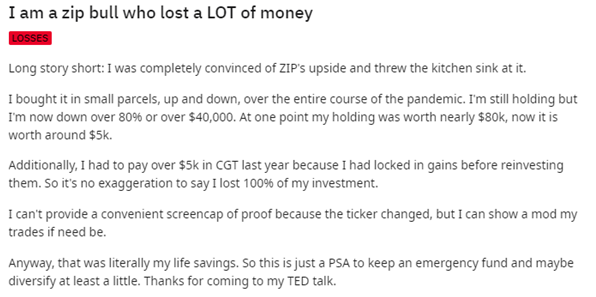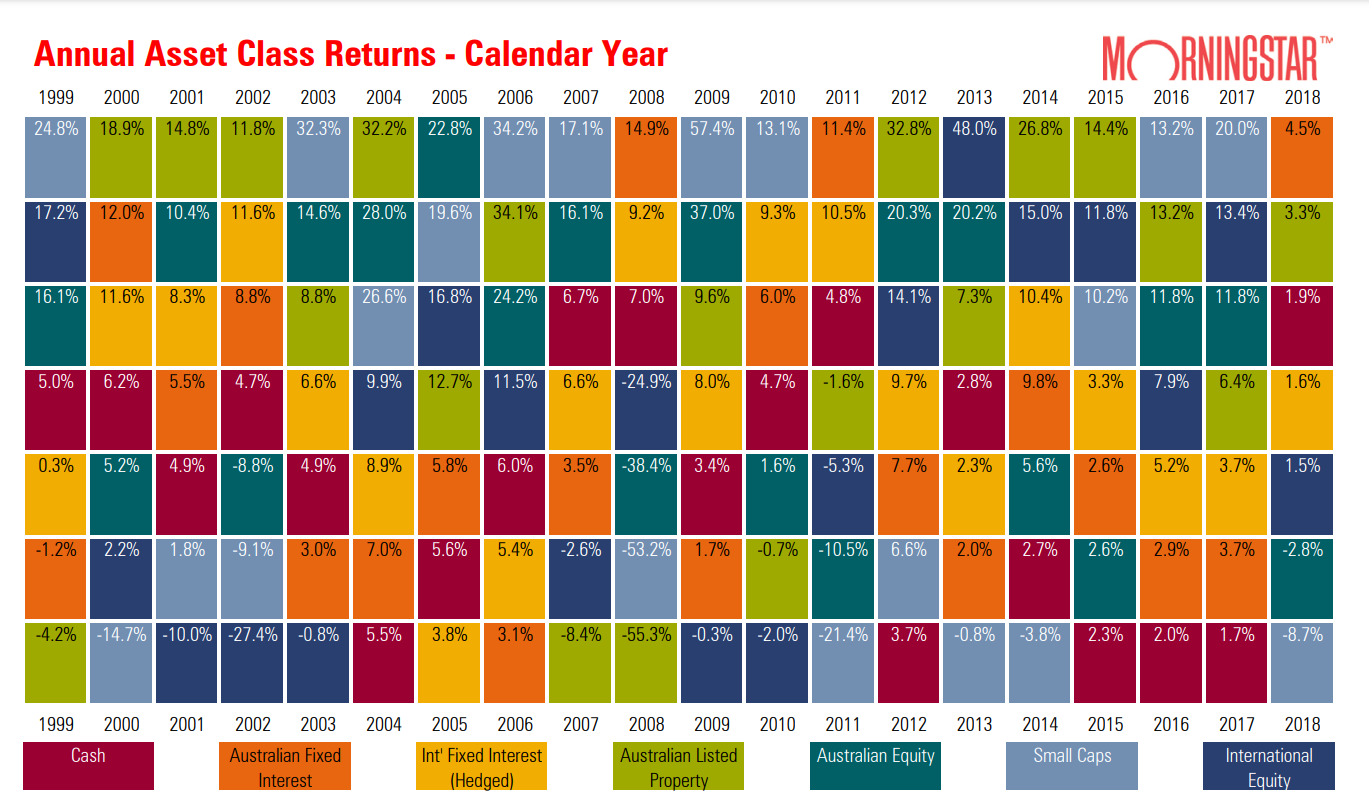Content Director Patrick Poke of Betashares explores the risks associated with impulsively reacting to investment trends fuelled by media hype, and explain why prudent asset selection, diversification, and maintaining a composed approach are essential for long-term investment success.
Periodically, the world of finance throws up enticing investment trends capable of seducing even the most disciplined investors into changing their strategy.
The beginning of this year exemplifies this phenomenon, as much attention is centred around the unfolding excitement in the US, particularly with NVIDIA Corp (NASDAQ: NVDA) and the ‘Magnificent Seven’ leading the charge in the AI craze.
This surge has ignited lively discussions across various social media platforms, with investors posing a spectrum of questions ranging from bold inquiries like
“Should I go all-in on Nvidia?”
to cautious reflections such as
“Is it wise to sell everything before a potential market downturn?”.
When chasing performance backfires
Over the past 15 years, we’ve observed a wide range of hot trends, including the rise of coal seam gas; the emergence of buy now, pay later platforms; the surge of cryptocurrencies; the cannabis craze; and the heightened interest in healthcare stocks prompted by COVID-19.
While acknowledging the validity of some of these trends, it’s crucial to recognise that exuberance surrounding these investments led to such significant distortions in their fundamentals that it contributed to massive boom-bust cycles.
Consider the examples outlined in the table below.
| Company | Theme | Decline from peak price |
| Karoon Gas | Coal seam gas (2009-10) | -82% |
| Cann Group | Medical cannabis (2017-18) | -98% |
| Gamestop | Short squeeze (2021) | -83% |
| Dogecoin | Endorsement by Elon Musk (2021) | -84% |
Source: Betashares (as of February 25, 2024). Peak price denotes the highest value reached by the stock or asset according to publicly accessible data.
Many of these became 10-baggers quickly, only for those gains to evaporate before most investors knew what hit them.
The once lively forums, brimming with excitement over these companies, quickly transformed into realms of despondency.
Some investors, like the individual mentioned below, found themselves grappling with a market downturn and steep losses of hard-earned savings.

Yet even disciplined and diversified investors are not immune to the allure of chasing fads, as evidenced by empirical data.
A US study revealed that despite the S&P 500 (INDEXSP: .INX) returning 9.65% p.a. over a 30-year period ending in 2022, the average equity fund investor achieved only a 6.81% annual return during the same time.
This significant variance can be attributed to factors including emotional decision-making, excessive trading activity and incurring high fees.
5 key lessons for investors
When reflecting on these market bubbles, it’s essential to distill the 5 key lessons for investors:
- The dangers of herd mentality: Investing due to the fear of missing out (FOMO) often leads to poor outcomes. As Warren Buffett once wisely cautioned, “Never invest in a business you cannot understand.”
- Having unrealistic expectations: Assuming that recent high returns will persist indefinitely is a common mistake. Investments don’t go up in a straight line forever.
- Investors often get the timing wrong: Unfortunately, investors who chase performance often buy when prices are near their peak and sell at or near the bottom.
- Be mindful of concentration risk: Placing all or sizable portions of your wealth into a single investment can jeopardise your long-term financial security if things go wrong.
- Don’t ignore costs: Frequent trading incurs higher transaction costs, which gradually diminish investment returns over time.
Asset allocation: The ultimate driver of success
While many investors are enticed by the prospect of predicting the market’s next big winner, they shouldn’t overlook the most crucial element of long-term success: asset allocation.
Your asset allocation is probably the most important decision you will make.
According to Roger G. Ibbotson and Paul D. Kaplan, asset allocation explains about 90% of the variability of investment returns over time.
Asset allocation involves distributing your money across various asset classes including shares, bonds, cash, and others.
Each asset class carries its own level of risk and potential returns, so diversifying helps mitigate the risk of significant losses from any single investment.
As the data in the table below demonstrates, predicting the top-performing asset class in any given year is challenging.
For example, during periods of poor sharemarket performance such as 2008, 2009 and 2020, bonds acted as a shock absorber, improving overall returns while providing income.

How to determine the right asset allocation
Finding the right asset mix requires some initial groundwork. We’ve laid out 5 key steps to help you determine the right asset allocation:
1. Understand your goals
Your investment journey starts with a clear understanding of your goals. To define your goals, consider questions such as the following:
- What are you saving and investing for?
- When will you need access to these funds?
Remember, goals can evolve over time, so periodically reassess how changes to your circumstances may affect your overall strategy.
2. Establish your asset mix
Asset allocation boils down to a simple principle: Dividing your investment portfolio into different categories as follows:
- stocks,
- bonds,
- cash, and
- alternatives.
Crafting the right mix and amount invested in each category depends on factors including the following:
- age,
- time horizon,
- goals and
- risk tolerance.
3. Determine investment choices
You’ll then want to think about how you’ll put your asset allocation choices into play.
There are 3 main ways to implement this:
- Direct shares: Offer direct ownership of a company but carry stock-specific risks.
- Managed funds: Pool money from multiple investors and invest in a portfolio of assets such as stocks or bonds.
- ETFs: Special managed funds tradable on an exchange like the S&P/ASX 200 (INDEXASX: XJO), offering better liquidity and transparency.
4. Consider costs
Take into account the management expense ratio (MER) and implementation costs (brokerage) associated with each investment, as these costs vary between active and passive investments.
One approach to consider is the core-satellite strategy, where the bulk of your investments are held in low-cost ETFs, while you allocate smaller portions to individual stocks or managed funds.
This way you keep costs low, but retain the flexibility to invest small amounts into assets with higher return potential with manageable concentration risk.
5. Maintain portfolio balance
Rebalancing entails adjusting your portfolio to realign with its target asset allocation.
For instance, if you initially allocated 80% to shares and 20% to bonds, but due to market gains, the share portion increased to 85%, rebalancing would involve selling some shares to return to the desired 80-20 split.
While there isn’t a universal method for rebalancing, experts typically suggest doing so once or twice a year to ensure your portfolio stays aligned with your investment objectives.
Final thoughts
Determining the appropriate asset allocation and putting your strategy into action may require some time and effort, but building your portfolio itself is relatively straightforward given the tools that investors have at their disposal today.
The real challenge lies in maintaining discipline and resisting the urge to constantly adjust your strategy in pursuit of fleeting opportunities in hot stocks, sectors, or markets.
ETFs for asset allocation
Some of the ETFs you can use to achieve diversified exposure to different asset classes include:
- Betashares Australia 200 ETF (ASX: A200) – Offering a cost-effective pathway to Australia’s top 200 companies, including industry giants like Commonwealth Bank of Australia (ASX: CBA), Telstra Group Ltd (ASX: TLS), CSL Ltd (ASX: CSL), and BHP Group Ltd (ASX: BHP), this ETF provides instant and diversified exposure to the domestic share market (before fees and expenses), making it a solid portfolio core.
- Betashares Nasdaq 100 Equal Weight ETF (ASX: QNDQ) – In response to the surge of interest in certain Nasdaq-listed companies driven by the AI craze, QNDQ adopts an equal-weight approach, limiting each stock to 1% of the portfolio at rebalance. This strategy mitigates overexposure to individual stocks like NVIDIA, Microsoft Corp (NASDAQ: MSFT), and Meta Platforms Inc (NASDAQ: META), offering investors a well-rounded exposure to the technology sector.
- Betashares Australian Composite Bond ETF (ASX: OZBD) – OZBD provides a cost-effective avenue to a diversified portfolio of over 400 quality bonds issued by Australian and state governments, as well as corporates. This ETF serves as a valuable tool for income generation while also offering a cushion against market downturns.
- Betashares Diversified All Growth ETF (ASX: DHHF) – DHHF stands out as an all-in-one investment solution, leveraging a passive blend of cost-effective ETFs traded on both the S&P/ASX 200 and global exchanges. With exposure to over 8,000 shares listed across 60 exchanges worldwide, DHHF is tailored for investors seeking diversified growth opportunities.


